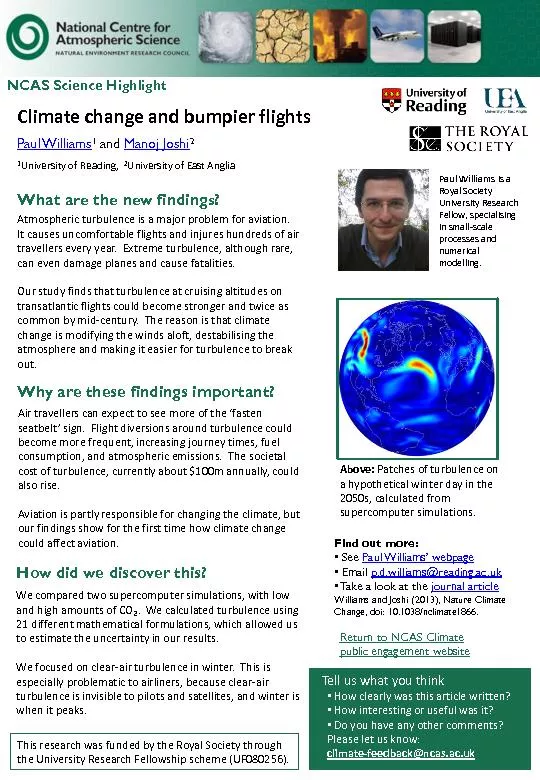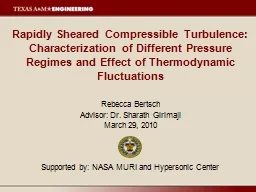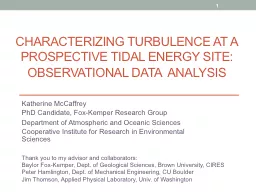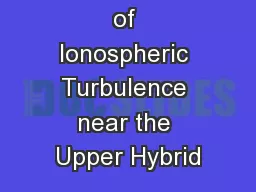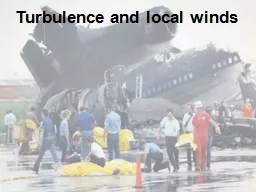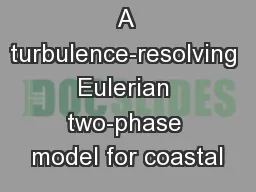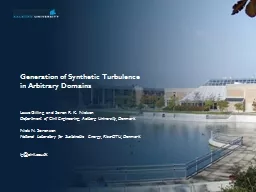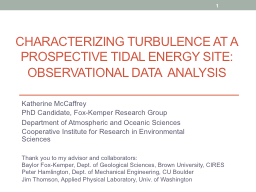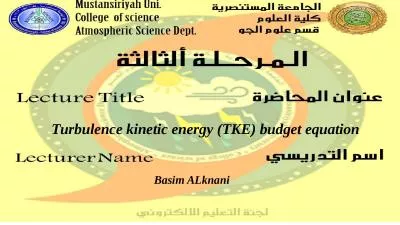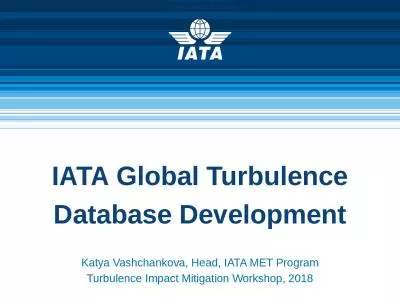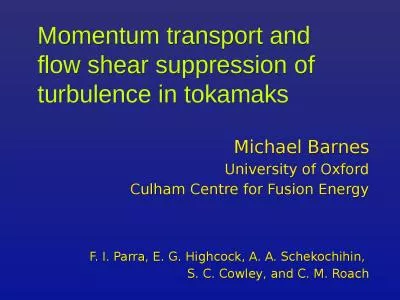PDF-Atmospheric turbulence is a major problem for aviation.
Author : mitsue-stanley | Published Date : 2016-03-04
It causes uncomfortable flights and injures hundreds of air travellers every year Extreme turbulence although rare can even damage planes and cause fatalities Our
Presentation Embed Code
Download Presentation
Download Presentation The PPT/PDF document "Atmospheric turbulence is a major proble..." is the property of its rightful owner. Permission is granted to download and print the materials on this website for personal, non-commercial use only, and to display it on your personal computer provided you do not modify the materials and that you retain all copyright notices contained in the materials. By downloading content from our website, you accept the terms of this agreement.
Atmospheric turbulence is a major problem for aviation.: Transcript
Download Rules Of Document
"Atmospheric turbulence is a major problem for aviation."The content belongs to its owner. You may download and print it for personal use, without modification, and keep all copyright notices. By downloading, you agree to these terms.
Related Documents

